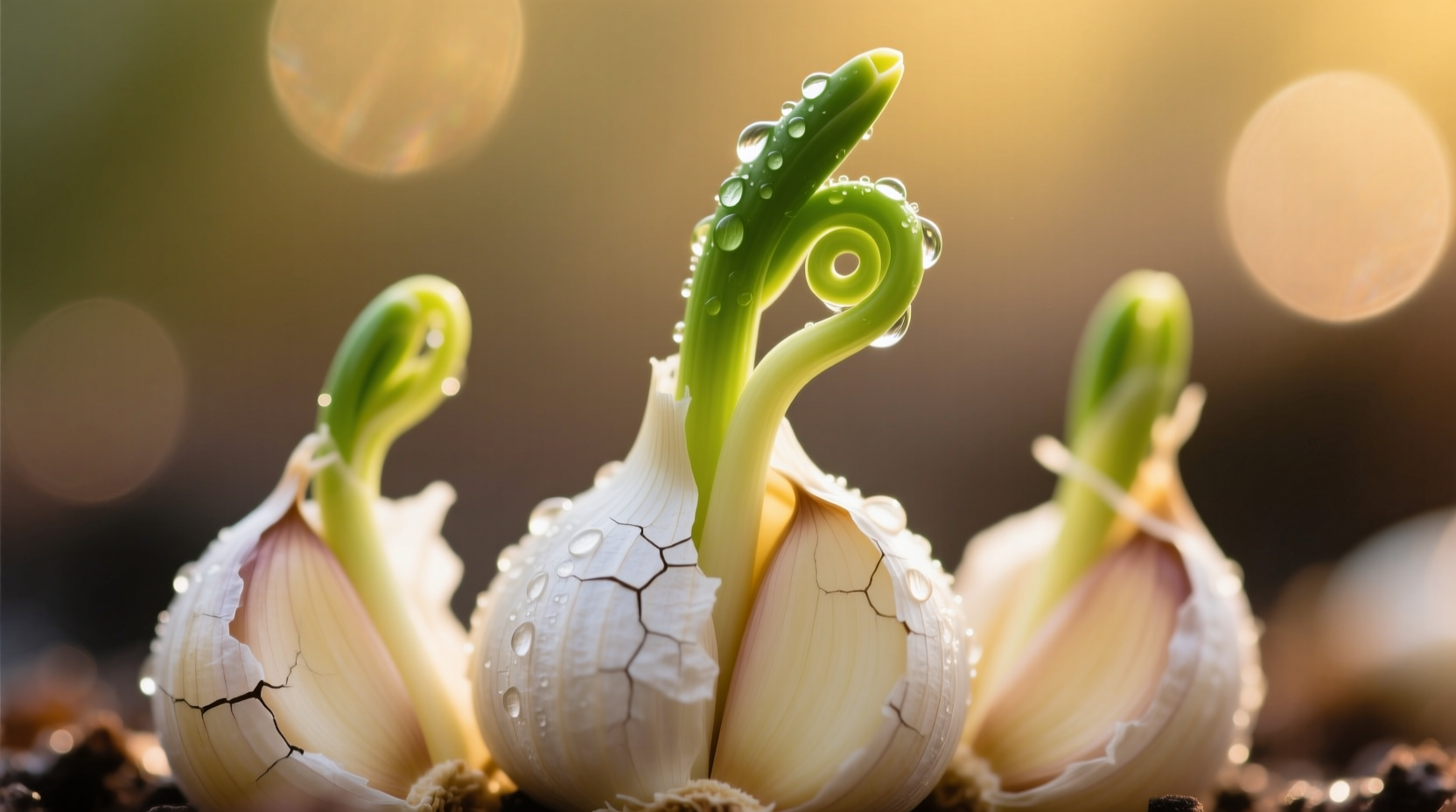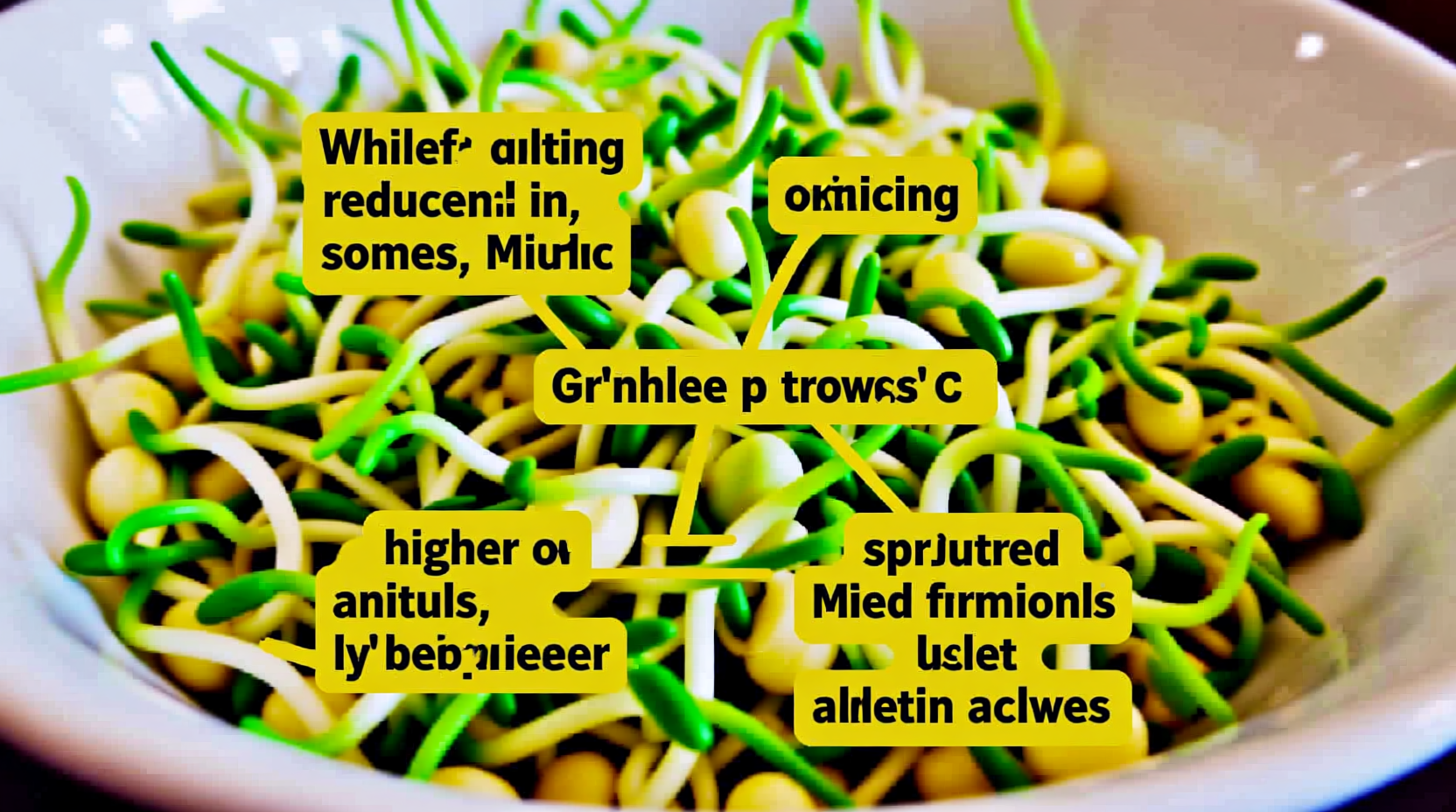Yes, you can safely use garlic that has sprouted—the green sprout in the center is edible though slightly bitter. Sprouted garlic remains nutritionally valuable and poses no health risks, though its flavor profile changes as it ages. Properly stored sprouted cloves can be used in cooking for up to two weeks after sprouting begins.
What Happens When Garlic Sprouts?
Garlic sprouting is a natural biological process that occurs when stored in warm, humid conditions. The clove redirects its energy to grow a green shoot from its center, which draws moisture and nutrients from the bulb. This process doesn't indicate spoilage but rather the garlic's attempt to reproduce.
According to research from the Oregon State University Food Safety Program, sprouting is simply garlic's response to environmental conditions and doesn't compromise food safety. The biochemical changes primarily affect flavor compounds rather than creating harmful substances.
| Garlic Stage | Flavor Profile | Best Culinary Uses |
|---|---|---|
| Fresh (unsprouted) | Sharp, pungent, robust | Raw applications, finishing dishes |
| Early sprouting (1-3 days) | Milder, slightly sweet | Sautéing, roasting, sauces |
| Advanced sprouting (1+ week) | Bitter center, milder outer clove | Cooking with strong flavors, removing green sprout |
Is Sprouted Garlic Safe to Eat?
Sprouted garlic presents no food safety concerns according to the U.S. Food and Drug Administration's food safety guidelines. Unlike potatoes (which develop toxic solanine when sprouting), garlic doesn't produce harmful compounds during sprouting. The green sprout itself is completely edible, though many prefer to remove it due to its slightly bitter taste.
The primary concern with sprouted garlic isn't safety but quality degradation. As garlic sprouts, it gradually loses moisture and its texture becomes softer. When evaluating sprouted garlic:
- Safe to use: Firm cloves with small green sprouts
- Use immediately: Cloves with longer sprouts but still firm texture
- Discard: Mushy, discolored, or moldy cloves
Flavor Changes in Sprouted Garlic
Research published in the Journal of Agricultural and Food Chemistry shows that sprouted garlic develops different flavor compounds than fresh garlic. The enzymatic changes reduce allicin (garlic's primary pungent compound) while increasing certain antioxidants.
Chef Antonio Rodriguez explains: "Sprouted garlic offers a more nuanced flavor profile that works beautifully in slow-cooked dishes. The bitterness of the green shoot actually complements rich meats and hearty stews when used thoughtfully."

How to Use Sprouted Garlic Effectively
Maximize your sprouted garlic with these professional techniques:
For Mild Sprouting (Small Green Shoots)
Simply remove the green sprout by cutting the clove in half lengthwise and scraping out the center. The remaining clove works well in most recipes calling for fresh garlic.
For Advanced Sprouting
When the sprout has grown significantly:
- Roast whole heads: The heat mellows bitterness while concentrating sweetness
- Make garlic oil: Infuse olive oil with sprouted cloves for dressings
- Create compound butter: Blend with softened butter for bread or proteins
- Add to soups/stews: The long cooking time balances the flavor profile
When to Discard Sprouted Garlic
While sprouting itself isn't dangerous, certain conditions indicate garlic should be discarded:
| Condition | Safe to Use? | Reason |
|---|---|---|
| Firm cloves with small green sprouts | Yes | Normal sprouting process |
| Soft but not mushy texture | Yes (use immediately) | Moisture loss, not spoilage |
| Mushy texture or dark spots | No | Beginning of decomposition |
| Visible mold or foul odor | No | Microbial contamination |
Preventing Garlic from Sprouting
Proper storage significantly extends garlic's shelf life. The National Center for Home Food Preservation recommends these evidence-based storage methods:
- Cool, dry environment: Store at 60-65°F (15-18°C) with low humidity
- Air circulation: Use mesh bags or open containers rather than sealed plastic
- Refrigeration: Only for peeled cloves in airtight containers (up to 2 weeks)
- Freezing: Whole heads maintain quality for 10-12 months when frozen
Avoid storing garlic near onions, as they release gases that accelerate sprouting. Never store garlic in oil at room temperature due to botulism risk.
Optimal Storage Timeline for Garlic
Understanding how long garlic remains usable helps reduce food waste:
- Whole bulb at room temperature: 3-5 months in optimal conditions
- Individual cloves at room temperature: 7-10 days after separation
- Peeled cloves in refrigerator: 10-14 days in airtight container
- Sprouted cloves: 7-14 days depending on sprout length and firmness
Garlic stored properly maintains its quality longer, but once sprouting begins, use within two weeks for best results.
Practical Tips for Home Cooks
Transform your sprouted garlic into culinary assets with these professional techniques:
- Flavor balancing: Pair sprouted garlic with acidic ingredients like lemon juice or vinegar to counteract bitterness
- Texture preservation: Add sprouted garlic later in cooking to maintain firmness
- Waste reduction: Regrow sprouted garlic in water for fresh garlic greens
- Flavor enhancement: Toast sprouted cloves before use to mellow bitterness
"Sprouted garlic shouldn't go to waste," notes Chef Antonio Rodriguez. "With minor adjustments to your technique, it becomes a valuable ingredient with unique flavor characteristics that can elevate your cooking."











 浙公网安备
33010002000092号
浙公网安备
33010002000092号 浙B2-20120091-4
浙B2-20120091-4